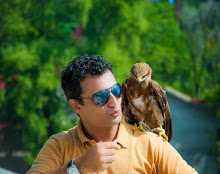I visit Taxila Museum couple of weeks ago and found that taking pictures in Museum are not allowed anymore, I become very unhappy but after that I request to the security guard and told him that I come from Lahore and travel almost 400+ Kilometers, so kindly give me permission to take some pictures. The chief security guard allows me but he said that don’t use the flashlight and do take pictures in hurry because it’s not allowed officially. So I take all these pictures in I guess less than 20 minutes time.
It is a site museum in so far as all the material exhibited here has been excavated in the different sites of Taxila. The museum was designed in the Greek style and galleries were set up by Sir John Marshall, the Director General of Archaeology in British India.
In the six galleries of the museum the material has been presented subject wise. Original objects have been exhibited in the wall showcases and in the middle of the halls are table showcases. The present museum building is only one-fourth of the original plan. The remaining parts are yet to be completed.
As we enter, we come to the main big hall, which shows in its middle a complete stupa from the Buddhist monastery of Mohra Moradu. To its left is an archaeological map of Taxila. On its right and left are table showcases exhibiting small finds. If we turn behind and look at the wall show cases we see schist stone sculptures on two sides. They present scenes from the life of the Buddha, other Buddhisattvas, and examples of Gandhara Art. Inone corners are red sand stone sculptures, and on the other wall are two sandstone sculptures, one of a Budhisattva and another of a Suri-god.
In the next hall to the left are stucco sculptures from Mohra Moradan in the wall showcases. To the left is Buddhist sculptures brought from Jaulian monastery. On the floor are glazed tiles of the Kushana period.
In the third hall on this side we have stucco heads on the hall showcases. The heads show different faces and hairstyles. The big Buddha heads are typically Gandharan in style. In the middle of the hall area stupa within railing, some relic caskets, and a sleeping Buddha from Bhamala monastery.
As we trace our steps back to the main hall, we can enter a small fourth hall, which shows silver and gold jewelry and coins of the local kings. The gold jewellery presents foreign as well as local styles.
We can again retrace our steps to the main hall and proceed to the right to the fifth small hall. The first important object is an Aramaic inscription of King Piyadasi Asoka. Then we see a series of inscription written in Kharoshthi and also in Brahmi on paper. Then we see small terracotta figurines and a small terra cotta ceremonial tank model. On the opposite well we see iron objects; arrowheads, nails, horse strips and plough.
Finally we enter the last sixth hall, where, on the wall showcases we see silver glasses of different shapes, bowls and spoons, toilet trays, small pottery pieces, bowls and plates of terracotta and pottery arranged for distillation. On the floor are big storage jars, pestle and mortar and saddle querns.
your purposes, please contact beyondmegapixel@yahoo.com
For more details about these pictures please join us on face book
© Daniyal Butt Photography | ALL Rights Reserved 















































